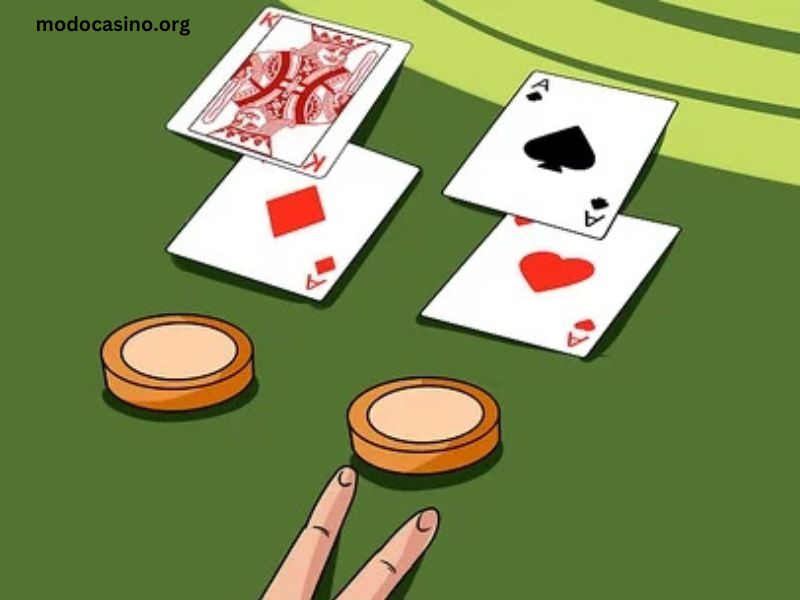Blackjack is one of the most popular card games in casinos, and for good reason. Not only does it offer players the chance to outsmart the dealer, but it also incorporates an element of strategy that can significantly increase your odds of winning. One of the most crucial strategies to master is knowing when to split in blackjack. This article will delve into the optimal scenarios for splitting pairs, the basic strategy behind it, and how it can affect your overall game.
Understanding the Basics of Splitting in Blackjack
Before we explore the specifics of when to split in blackjack, let’s clarify what splitting means. When you receive two cards of the same value, you have the option to split them into two separate hands. This allows you to double your bet and play each hand independently, which can potentially lead to increased winnings. However, it’s essential to know when to make this move to maximize your chances.
The Rules of Splitting
- Initial Requirement: You can only split if your first two cards are of equal value, such as two 8s or two Kings.
- Betting: After splitting, you must place an additional bet equal to your original bet for the new hand.
- Drawing: You can hit (take additional cards) on each hand after splitting, and the rules for each hand are treated independently.
Situations to Split in Blackjack
Now, let’s look at the optimal situations for splitting pairs, helping you understand when to split in blackjack.
1. Splitting Aces and Eights
- Aces: Always split Aces. This is a foundational rule in blackjack strategy. Splitting Aces gives you the potential to hit 21 with two separate hands, increasing your chances of winning.
- Eights: Always split Eights as well. An 8-8 totals 16, which is a weak hand against the dealer’s potential strong hand. Splitting Eights allows you to potentially create two stronger hands.
2. Splitting Nines
Splitting Nines is a more nuanced decision. You should split if the dealer shows a 2 through 6 or an 8 or 9. However, if the dealer has a 7, 10, or Ace, it’s better to stand on 18 rather than risk splitting.
3. Splitting Sevens
You should split Sevens if the dealer shows a 2 through 7. If the dealer has an 8 or higher, you should consider hitting or standing, as the dealer’s hand could be stronger.
4. Splitting Sixes
Similar to Sevens, you should split Sixes when the dealer shows a 2 through 6. If the dealer shows a 7 or higher, standing on 12 is often a safer choice.
5. Splitting Fours
Splitting Fours is generally not advisable. Instead, you should hit. However, if the dealer shows a 5 or 6, you can consider splitting to try and form two stronger hands.
Situations to Avoid Splitting
Understanding when not to split is just as crucial as knowing when to split. Here are some scenarios where splitting is not advantageous:
1. Splitting Tens
Never split Tens. A hand of 20 is very strong, and splitting can diminish your chances of winning. Always stand on a pair of Tens.
2. Splitting Fives
Similar to Tens, you should not split Fives. Instead, treat them as a total of 10 and double down when the dealer has a weaker card (2 through 9).
The Impact of the Dealer’s Upcard
The dealer’s upcard plays a significant role in your decision to split. Understanding how to read the dealer’s card can influence your strategy.
- Dealer Shows Weak Cards (2-6): If the dealer shows a weak card, this is an opportunity to split stronger hands (Aces, Eights) to capitalize on their disadvantage.
- Dealer Shows Strong Cards (7-Ace): When the dealer has a strong upcard, it’s often better to stand on stronger hands rather than risking weaker hands through splitting.
Common Misconceptions About Splitting
There are several misconceptions about splitting in blackjack that can lead to poor decision-making:
1. Always Split Aces
While it’s true that splitting Aces is advantageous, many players mistakenly believe they can only draw one card on each Ace. While this is the rule in many casinos, it’s important to confirm the specific rules at your table.
2. Splitting Pairs Is Always Beneficial
Players sometimes think that splitting any pair is a good strategy. However, as we’ve discussed, certain pairs like Tens or Fives should never be split due to the strength of the hand.
Advanced Splitting Strategies
For seasoned players, there are advanced strategies that can further refine your splitting decisions:
1. Card Counting
Card counting can help you gauge when it’s beneficial to split based on the remaining cards in the deck. If the deck is rich in high cards, splitting Aces or Eights can yield significant benefits.
2. Adjusting to Table Rules
Different casinos have various rules regarding splitting, such as whether you can re-split or draw multiple cards after splitting Aces. Familiarizing yourself with these rules can help you make more informed decisions.
Managing Your Bankroll
While knowing when to split in blackjack is essential, managing your bankroll is equally important. Here are a few tips to help you stay in the game:
- Set Limits: Determine a budget before playing and stick to it. This prevents emotional decisions based on wins or losses.
- Take Breaks: Regular breaks can help you maintain focus and make rational decisions.
- Stay Disciplined: Don’t chase losses. If you’re on a losing streak, it’s often best to walk away and return later.
Conclusion
Mastering the art of knowing when to split in blackjack can significantly enhance your game and increase your winning potential. By understanding the basic rules of splitting, the optimal scenarios for doing so, and how the dealer’s card affects your strategy, you’ll be well-equipped to make informed decisions at the blackjack table.
Whether you’re a beginner or an experienced player, incorporating these strategies into your gameplay will improve your overall blackjack experience. Remember to keep practicing, stay disciplined, and most importantly, enjoy the game!




